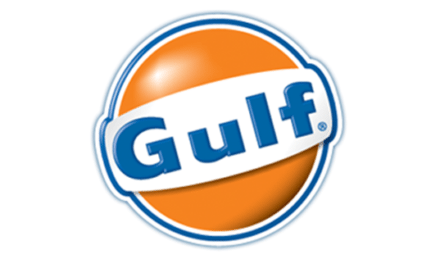Bearish News Overwhelms Prices
- Heating Degree Days 22% below normal
- ULSD demand falling off the table
- Crude oil production finds a floor at 9 million barrels per day
- Natural gas storage has first withdrawal of the season
Sincerely, Alan Levine Chairman, Powerhouse
Table covers crude oil and principal products. Other products, including residual fuel oil and “other oils” are not shown, and changes in the stocks of these products are reflected in “Total Petroleum Products.” Statistics Source: Energy Information Administration “Weekly Petroleum Status Report” available at www.eia.doe.gov
The Matrix
The failure of Heating Degree Days to develop in this El Nino winter of 2015 adds to the bearish price pressure of this season. The United States has generated 200 fewer HDDs than normal for the year starting in July, 2015. This was 22 per cent below normal and slightly more compared with last year.
The HDD shortfall appears in the EIA weekly supply/demand balance for the week ending November 27, 2015. Distillate fuel oil stocks added 3.1 million barrels to domestic supply. And distillate demand has been falling dramatically.
Continuing predictions of reductions in domestic crude oil production have come up hard against reality. Nine million daily barrels of crude oil production have proven to be a hard level to break. Output reached 9.6 million barrels per day at the end of June, 2015 and rapidly fell to just over 9.1 million barrels daily in mid-September. Since then, output has stayed over 9 million barrels per day and during the report week recorded 9.2 million barrels daily, a level not seen since late August.

Another aspect of low prices has been strong gasoline market fundamentals. EIA’s most recent weekly report put gasoline demand at 9.3 million barrels per day. Over a longer time span, gasoline demand year-to-date is running 9.1 million barrels daily, 3.5 per cent higher than last year-to-date.
Globally, the gasoline price carry is far smaller than that of crude oil. Gasoline prices for January 2017 are 4.6 per cent above current prices, hardly enough to encourage storage. By contrast, crude oil prices are carrying 17.6 per cent over the same period. Lesser incentive for storing fuel points to continuing attractive gasoline pricing over the next few years.
Supply/Demand Balances
Supply/demand data in the United States for the week ending November 27, 2015 were released by the Energy Information Administration.
Total commercial stocks of petroleum increased 1.8 million net barrels during the week ending November 27, 2015.
Builds were reported in stocks RBOB, fuel ethanol, K-jet fuel, distillates, and residual fuel oil. Draws were reported in stocks of propane and other oils.
Crude oil supplies in the United States increased to 489.4 million barrels, a build of 1.2 million barrels.
Crude oil supplies increased two of the five PAD Districts. PADD 2 (Midwest) crude oil stocks grew 2.3 million barrels and PADD 3 (Gulf Coast) stocks increased 1.4 million barrels. PADD 1 (East Coast) stocks experienced a draw of 0.2 million barrels, PADD 4 (Rockies) stocks decreased 0.2, and PADD 5 (West Coast) stocks declined 2.1 million barrels.
Cushing, Oklahoma inventories increased 0.4 million barrels to 59.0.
Domestic crude oil production increased 37,000 barrels daily to 9.202 million barrels per day.
Crude oil imports averaged 7.747 million barrels per day, a daily increase of 414,000 barrels.
Refineries used 94.5 per cent of capacity, an increase of 2.5 percentage points from the previous report week.
Crude oil inputs to refineries increased 423,000 barrels daily; there were 16.803 million barrels per day of crude oil run to facilities. Gross inputs, which include blending stocks, rose 461,000 barrels to 17.070 million barrels daily.
Total petroleum product inventories saw an increase of 0.6 million barrels. Gasoline stocks increased 0.1 million barrels; total stocks are 216.9 million barrels.
Total product demand increased 439,000 barrels daily to 19.866 million barrels per day.
Demand for gasoline increased 360,000 barrels per day to 9.281 million barrels daily.
Distillate fuel oil supply increased 3.1 million barrels. National demand was reported at 3.646 million barrels per day during the report week. This was a weekly decrease of 53,000 barrels daily.
Propane stocks decreased 2.1 million barrels to 104.1 million barrels. Current demand is estimated at 1.298 million barrels per day, an increase of 448,000 barrels daily from the previous report week.
Natural Gas
According to the EIA:
Working gas in storage was 3,956 Bcf as of Friday, November 27, 2015, according to EIA estimates. This represents a net decline of 53 Bcf from the previous week. Stocks were 543 Bcf higher than last year at this time and 247 Bcf above the five-year average of 3,709 Bcf. At 3,956 Bcf, total working gas is above the five-year historical range
This was the first drop of this year’s heating season. Typically, the injection season ends on October 31, but this year injections continued into November. In part the higher injection reflects growth in natural gas production. Following a decline in the first half of 2015, output recovered, setting records in July, August and September. And while consumption grew because of power generation, the net favored production and growth in supply.
Futures trading involves significant risk and is not suitable for everyone. Transactions in securities futures, commodity and index futures and options on future markets carry a high degree of risk. The amount of initial margin is small relative to the value of the futures contract, meaning that transactions are heavily “leveraged”. A relatively small market movement will have a proportionately larger impact on the funds you have deposited or will have to deposit: this may work against you as well as for you. You may sustain a total loss of initial margin funds and any additional funds deposited with the clearing firm to maintain your position. If the market moves against your position or margin levels are increased, you may be called upon to pay substantial additional funds on short notice to maintain your position. If you fail to comply with a request for additional funds within the time prescribed, your position may be liquidated at a loss and you will be liable for any resulting deficit. Past performance may not be indicative of future results. This is not an offer to invest in any investment program.
Powerhouse is a registered affiliate of Coquest, Inc.
We’d like your feedback.
Please respond to [email protected]
or call: 202 333-5380
Copyright © 2015 Powerhouse, All rights reserved.












